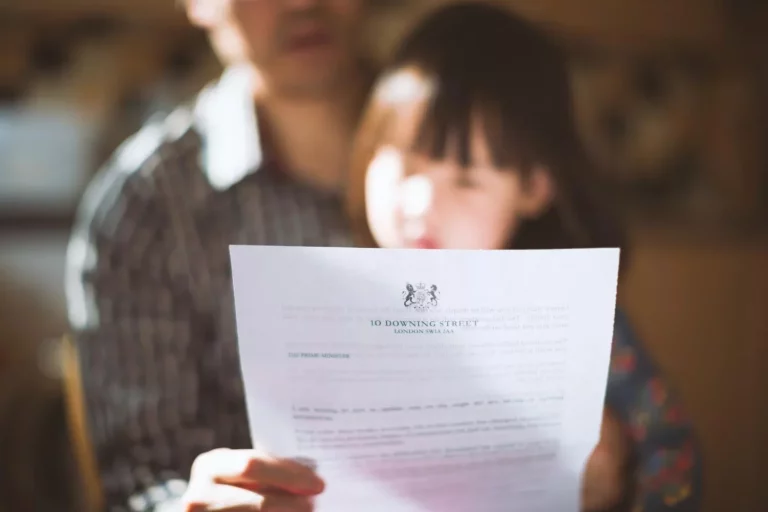Child Custody: Taking Legal Guardianship of Non-Biological Child
Have you ever wondered how to legally take custody of a child who isn’t biologically yours? At TheBostonDivorceLawyer, our experienced team can guide you through the process step by step. Learn how to protect and provide for a child in need of a stable and loving home.
As stated by legal experts, to take custody of a child that is not yours, you must file a petition for third-party custody in family court. The judge will then consider various factors such as the child’s best interests before granting custody to a non-parent.
Legal Guardianship
This can happen when the child’s parents can’t take care of them because they are sick, in jail, or for other reasons. To become a legal guardian, you need to ask the court and show that you can take care of the child’s physical, emotional, and financial needs.
Once you are named the child’s legal guardian, you can make decisions about their education, medical care, and general wellbeing. You will also need to provide a stable and supportive environment for the child to grow up in.
Let me explain, it’s important to know that legal guardianship is different from adoption. The child’s biological parents keep their rights, but as a legal guardian, you can make decisions for the child just like a parent would.
If you want to become a legal guardian for a child who isn’t yours, it’s important to get legal advice so you understand what is required and expected. By becoming a legal guardian, you can give a child in need a safe and caring home.
Family Court Process
Getting custody of a child can be a long and complicated process. Here’s what generally happens:
1. File a Petition: First, you need to file a form with the court explaining why you think you should have custody of the child.
2. Court Hearing: Next, the court will set a date for a hearing. At this hearing, you can present evidence and bring witnesses to support your case.
3. Judge’s Considerations: During the hearing, the judge will think about what’s best for the child, how the child gets along with their parents, and if you can offer a stable and loving home. To be fair, sometimes, the court might also order a home visit or talk to the child for more details.
4. Custody Order: If the judge agrees that you should have custody, they will issue a custody order. This order will include details like visitation rights for the child’s parents, child support payments, and a schedule for when the child will be with each parent.
Remember, going through family court can be emotional and stressful. It’s a good idea to get help from a family law attorney to guide you through the process and make sure your rights are protected.
Filing Custody Petition
Start by getting the necessary forms from the court or online. Fill them out carefully, including details about your relationship with the child and why you think having custody is best for them.
You might need to provide documents or evidence to support your request. This could include proof of your relationship with the child, any history of caring for them, or any risks they face in their current situation.
Once the forms are filled out, submit them to the court and pay any fees. You will likely have to attend a court hearing to present your case to a judge. Keeping it real, be ready to explain why you want custody and how it will benefit the child.
At the hearing, the judge will review all the information and make a decision based on what’s best for the child. Be honest and respectful, and be ready for the possibility that the court might ask for more information or evaluations before deciding.
If the court approves your request, you will be legally responsible for the child and can make decisions about their upbringing. Follow any court-ordered custody arrangements and stay involved in the child’s life to ensure their well-being.
Obtaining Consent
First, you need to talk to the child’s parent or legal guardian about why you want custody. Be kind and understanding, always thinking about what’s best for the child.
It’s important to get legal advice to understand all the steps you need to take. Knowing the laws about custody is key to doing everything right. You might also need permission from the other parent or guardian if they’re involved.
My point is, building a strong relationship with the child and creating a safe, loving environment can help you gain the trust of the parent or guardian. Showing that you’re dedicated to the child’s well-being is very important for getting their consent.
Honest communication and legal advice are essential in this process. Always approach the situation with compassion, keeping the child’s best interests in mind.

Home Study Requirements
These rules are in place to make sure the child in your care is safe and well. A home study usually means a social worker or agency visits your home to see if it’s a good place for the child.
During this visit, the social worker will check different things about your home and family. They will look at how clean and safe your home is, the living and sleeping areas for the child, your finances, job, and any criminal background. Keeping it real, the social worker will also see if you can give emotional support and care to the child. They may ask about your parenting skills, your community involvement, and how you plan to meet the child’s education and growth needs.
The home study is detailed and may take a while. It’s important to be honest with the social worker since any information can affect their decision about placing the child with you. The goal is to make sure the child is placed in a safe, stable, and loving home.
The End Note
Taking custody of a child that is not yours can be a complex and challenging process.
What TheBostonDivorceLawyers is liking is, it is very important to understand the legal requirements in your jurisdiction, gather evidence of your relationship with the child, and seek the assistance of a qualified attorney to work through the legal system. Ultimately, ensuring the best interests of the child should be the primary focus throughout this emotional and legal path.







